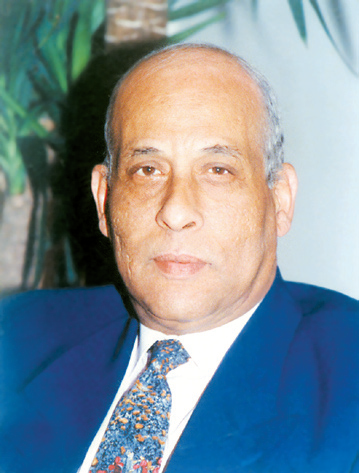Transcatheter Aortic Valve Implantation (TAVI)
(Transcatheter Aortic Valve Implantation (TAVI
Prof. Dr. Adel Imam
M.B.BCH.,D.CV.D.M.M.D. F.A.C.C
Prof. of Cardiology National Heart Institute Imbaba
The aortic valve is the valve that regulates the flow of oxygen-rich blood from the heart into the main blood vessel leading to the rest of the body It is composed of three triangular-shaped flaps that fit neatly together.
As the main chamber of the heart contracts, the flaps open up and allow blood to enter into the artery. They then slap shut to prevent blood from flowing back into the heart. As with other parts of the body, over a long period of time this valve can wear out and become dysfunctional.
This minimally invasive surgical procedure repairs the valve without removing the old, damaged valve. The surgery may be called a transcatheter aortic valve replacement (TAVR) or transcatheter aortic valve implantation (TAVI).
The TAVI approach delivers a fully collapsible replacement valve to the valve site through a catheter.
Once the new valve is expanded, it takes over the job of regulating blood flow.
This procedure is fairly new and is FDA approved for people with symptomatic aortic stenosis who are considered a high risk patient for standard valve replacement surgery. The differences in the two procedures are significant.
Usually valve replacement requires an open heart procedure, in which the chest is surgically separated (open) for the procedure. The TAVR or TAVI procedures can be done through very small openings that leave all the chest bones in place.
A TAVR procedure is not without risks, but it provides beneficial treatment options to people who may not have been candidates for them a few years ago while also providing the added bonus of a faster recovery in most cases. A patient's will likely require a shorter hospital stay (average 3-5 days).
But, right now, one of the biggest obstacle to its wider use is financial. The TAVI procedure is more expensive than open-heart surgery because of the extra cost of these specialized valves.
At this time the procedure is reserved for those people for whom an open heart procedure is too risky. For that reason, most people who have this procedure are in their 70s or 80 and often have other medical conditions that make them a better candidate for this type of surgery.
Although relatively new, TAVI can be an effective option to improve quality of life in patients who otherwise have limited choices for repair of their aortic valve.
It is fair to say that as the technique gets better, some of the procedural risks will diminish and we will see it move into a larger population of patients.


 info@utopiapharma.com
info@utopiapharma.com
 Plot No. (2) Industrial Zone (A7) - formerly Zizinia - Cairo - Ismailia Road - 10th of Ramadan - Sharkia
Plot No. (2) Industrial Zone (A7) - formerly Zizinia - Cairo - Ismailia Road - 10th of Ramadan - Sharkia